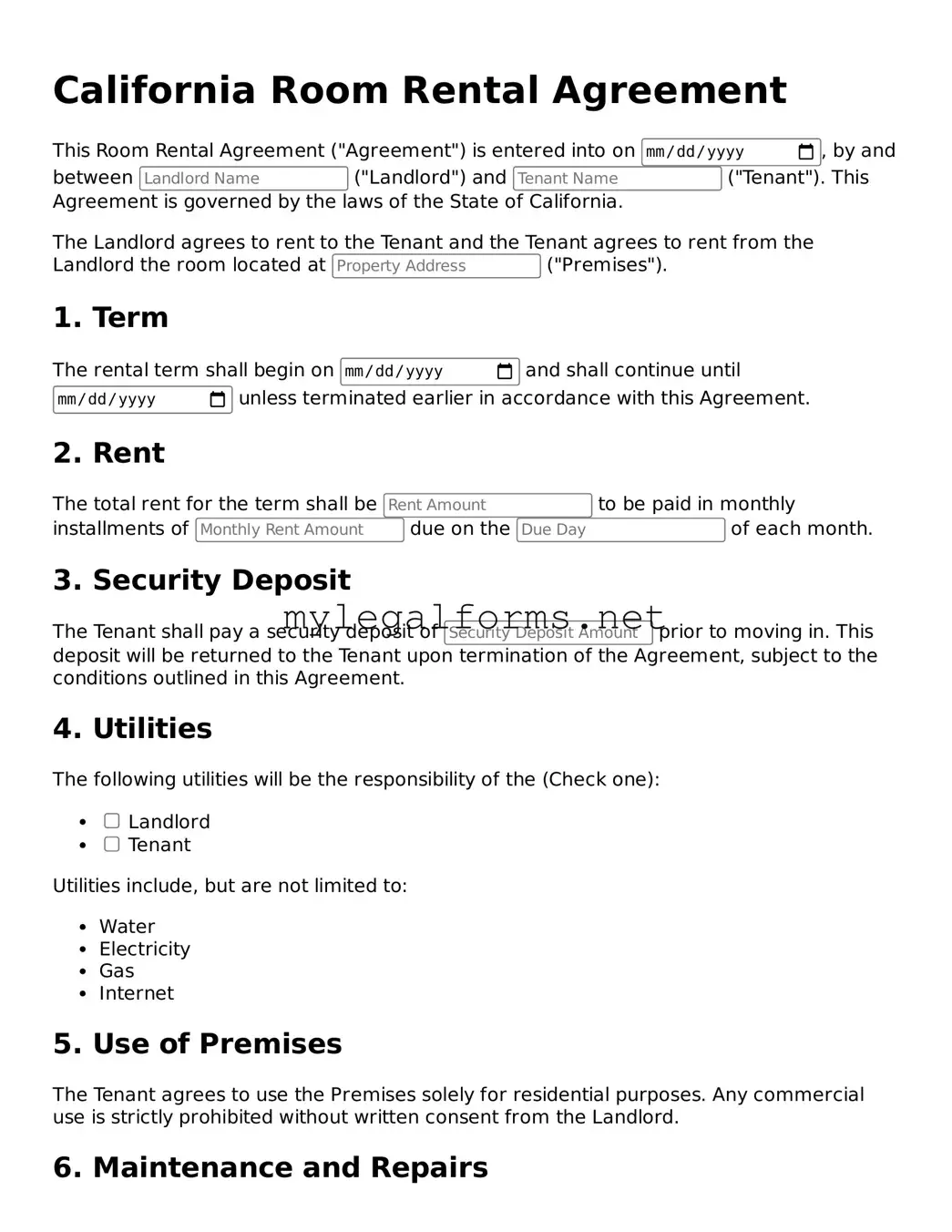Room Rental Agreement Document for California State
The California Room Rental Agreement is a legal document that outlines the terms and conditions under which a room can be rented in California. This agreement protects both the landlord and the tenant by clearly defining their rights and responsibilities. Understanding this form is essential for anyone looking to rent or lease a room in the state.
Launch Room Rental Agreement Editor
